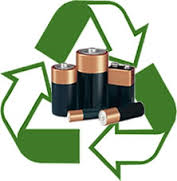The proportion of waste lead acid batteries counted as ‘portable’ has continued to fall.
 According to figures for the second quarter of 2014, the Environment Agency has reported that the UK is set to meet the 35% collection target for 2014, collecting over 7,500 tonnes of waste batteries to date out of an expected obligation of around 11,800 tonnes.
According to figures for the second quarter of 2014, the Environment Agency has reported that the UK is set to meet the 35% collection target for 2014, collecting over 7,500 tonnes of waste batteries to date out of an expected obligation of around 11,800 tonnes.
Data published earlier in the year covering the first quarter showed that the proportion of the target being met through the collection of nickel cadmium (Ni-Cd) and ‘other’ batteries had risen. This is a trend that has carried through into quarter two, according to last week’s figures. But, the trend is unlikely to quell concerns over the high proportion of lead acid batteries being used to meet the statutory EU targets, which makes up the vast majority of batteries collected for recycling. This is despite lead acid batteries only being a relatively small proportion of the new batteries placed onto the market.
The disparity in collection rates stems from differences in interpretation between battery recyclers and producers over which lead acid batteries are classified as being ‘portable’ or ‘industrial’ at the beginning and end of life. This has led to a greater volume of lead acid batteries being collected for recycling than producers are obligated to finance. A consultation on changing the legislation as to what counts as a ‘portable battery’ was carried out last year, but was scrapped after an error in the consultation documents was discovered. A fresh consultation on changing the definition is expected to take place this autumn.





